Call Us
8:00am - 17:00PM
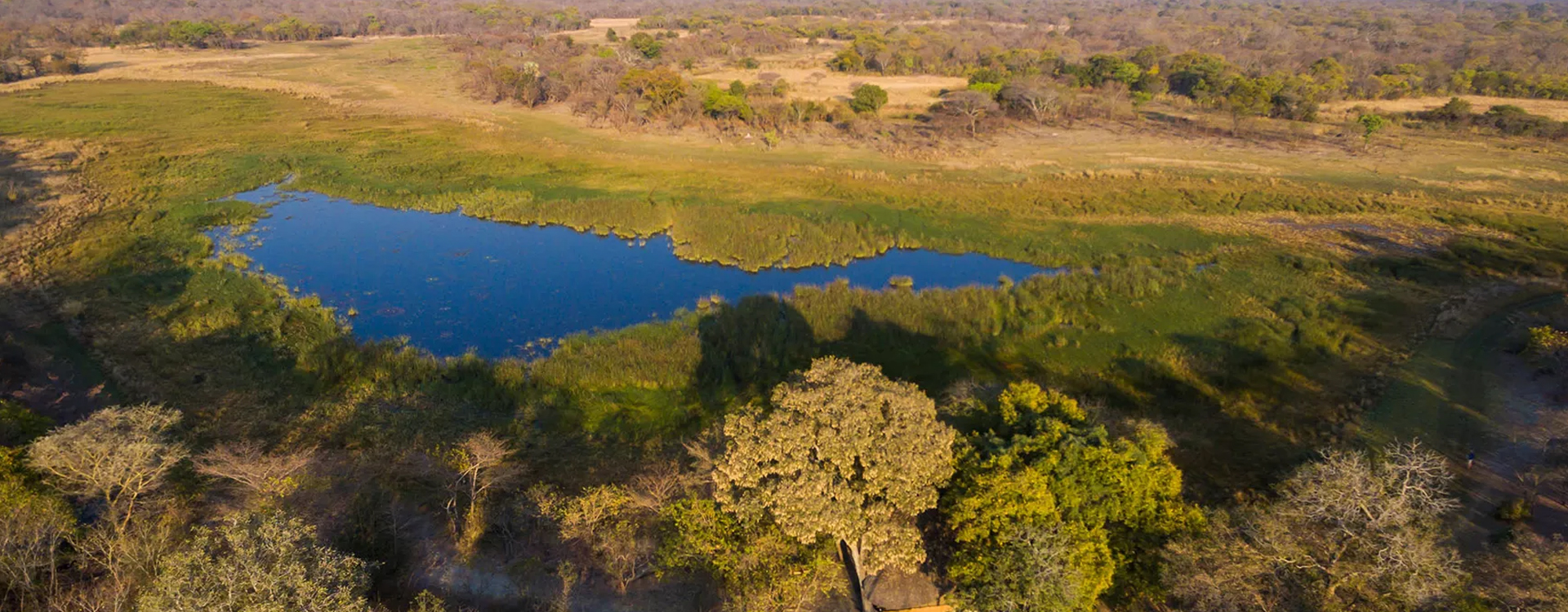
8:00am - 17:00PM

Situated in the central part of western Zambia, Kafue National Park covers an expansive area of about 22,400 km2. Approximately equivalent to the size of Wales, it is the biggest national park in Zambia and one of the largest in Africa.
Established in the 1950s, Kafue is also the oldest Zambia National Park. It features a variety of diverse landscapes such as savannahs, wetlands, and riverine forests. These varied landscapes along with the rich habitat support a staggering diversity of wildlife including lions, leopards, cheetahs, elephants, hippos, crocodiles, and over 500 species of birds. Kafue provides enough wildlife sightings opportunities for safari enthusiasts that make it one of the Best Places to Visit in Zambia.
But, despite the massive size or proximity to two of the prominent cities of Zambia, Kafue remains untouched, unexplored, and little-known. So, if you want to experience the untamed wilderness of the country, Kafue National Park Safaris are your best bet. As a matter of fact, it won’t be wrong to say that Zambia Safaris would feel incomplete without traveling to this epic Zambia Destination- Kafue National Park.
The Best Time to Visit Kafue National Park is during the middle and end of the dry season, extending from July to October. With the dried-out vegetation, and animals heading out to rivers and gathering around water resources, it becomes the most reliable time for wildlife viewing in their natural surroundings. Additionally, the highlight of the park, the Busanga Plains, is especially welcoming and accessible from August to October. Outside these months, it's flooded and closed, so plan your visit to catch the park at its best.
Kafue National Parks Wildlife Sanctuary teems with nature's wonders, hosting elephant super herds by Lake Itezhi-Tezhi and rivers bustling with hippos and crocodiles. The park's landscape shelters relaxed lions and a remarkable diversity of antelope species, from the aquatic red lechwe to the graceful sable. Night drives reveal stealthy leopards, while the Busanga Plains is a stage for the elusive cheetah, making every visit a thrilling encounter with the wild.
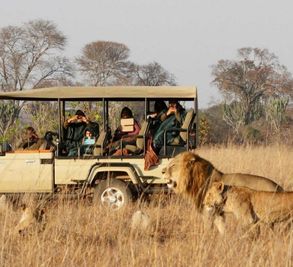
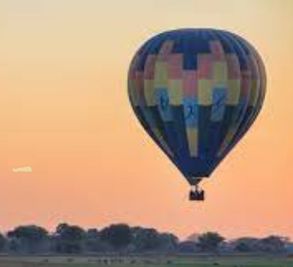
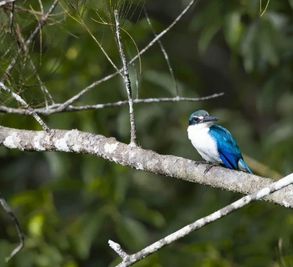

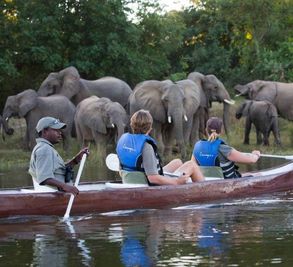
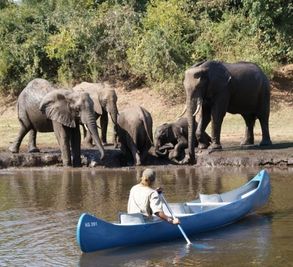
An influential British Rhodesian conservationist, Norman Carr established the Kafue National Park in the 1950s. Let’s look at the sequence of events that took to the establishment of Kafue National Park.
Before the establishment of the park, the area was inhabited by some indigenous tribes such as the Lozi, Tonga, and Luvale. These people lived in peace and harmony with the local wildlife till the arrival of European settlers in the 19th century. Thereafter, the region’s ecology changed over time with hunting, poaching, and agricultural development activities.
These illegal hunting activities led to the degradation of the local ecosystem and many wildlife species were hunted down to the point of extinction. In 1924, the Kafue Game Reserve was established to address the decreasing wildlife within the region.
Thereafter, several proposals were discussed for turning the game reserve into a national park. The proposed national park area included both Kafue Game Reserve and the Cordon Conservatory Area. The government of Northern Rhodesia (formerly Zambia) worked in tandem with other conservationists to establish the national park in the region in 1950. Thus, Kafue National was officially created in 1950.
From 1954-1960, all the villages within the park were removed to the outside of the park. Some of those people included Chief Kaingu of Kantinti, Chief Kasonso of Kusagan Plain, and Chief Kabulwebulwe of Katobo.
In the year 1972, Kafue National Park along with 17 other Zambia National Parks was officially gazetted. Later, a motion was passed by the national assembly for the same on 23rd November 1991.
Since, its establishment, Kafue National Park has been managed by Zambia Wildlife Authority. The park has faced numerous challenges over the years including poaching, human encroachment, and climate change. However, the government and local conservation agencies work together to mitigate the concerned issues.
An Insight: For better administration of Kafue National Park, the command of the park was divided into two. The northern command is located at Ngoma and the southern command is located at Chunga.
The Kafue National Map represented below gives all the details of the various gates of the park. Besides that, the location of all its lodges is also shown.
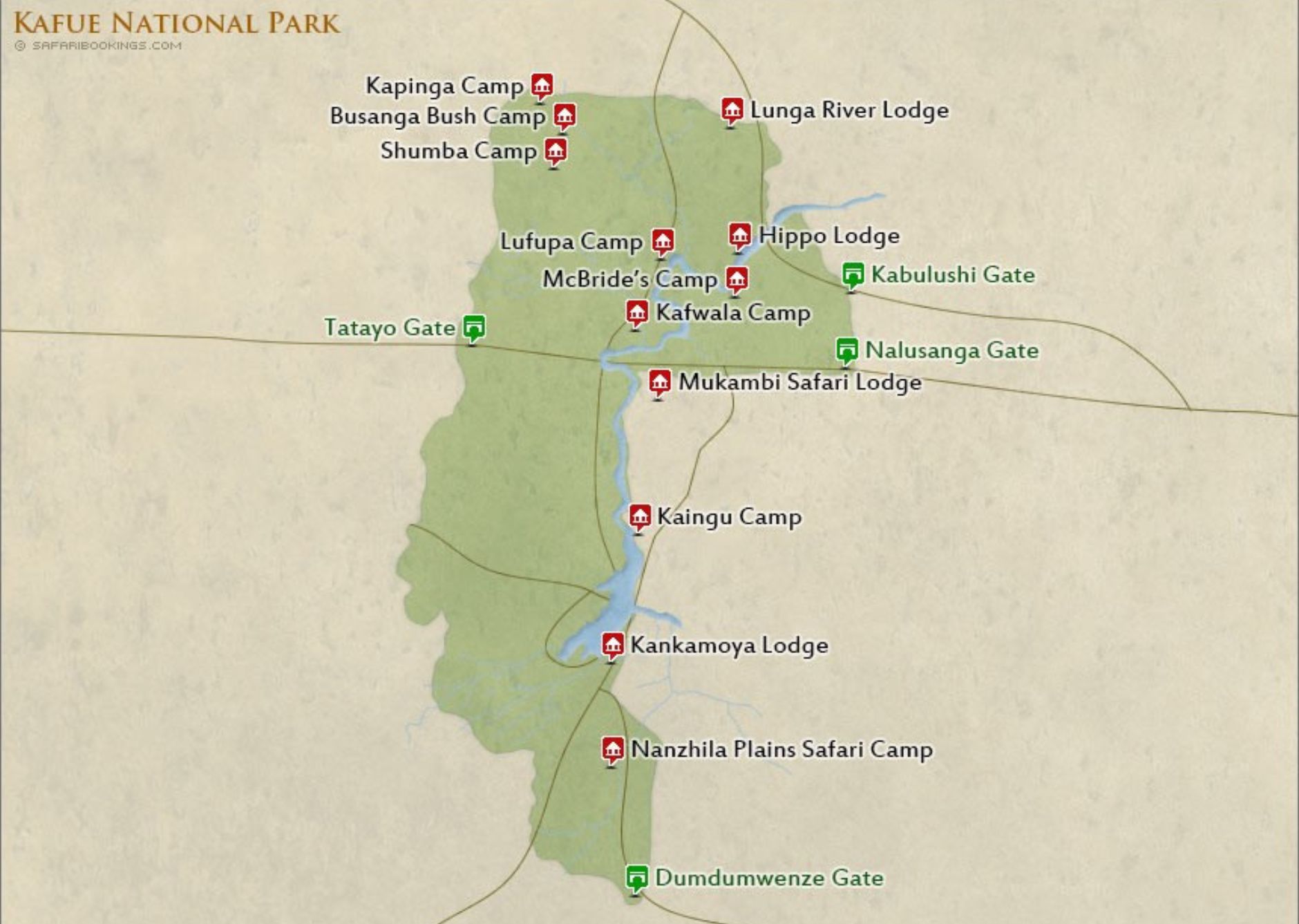
Located in central and western Zambia, the Kafue National Park is situated at an average altitude of 1200 meters above sea level. As the national park covers a massive area of 22,400 km2, it is all but natural that the terrain and geography of the place will vary considerably. Some of the primary geographical features of the national park include the following.
Busanga Plains
The beautiful Busanga Plains are located in the northern part of the Kafue and are characterized by its extensive floodplains which are flooded seasonally and attract a large number of wild animals and amazing birdlife. The plains are also home to large herds of antelopes, such as puku, red lechwe, and buffalo. Predators such as lions, cheetahs, and wild dogs can also be sighted during Kafue National Park Safaris.
Central Region Of The National Park
This region is always regarded as the heart of the national park and is dominated by miombo woodlands, riverine forests, and wetlands. It is home to a diverse range of wildlife including elephants, buffalos, leopards, zebras, and a variety of antelopes.
Nanzhila Plains
These plains in the southern region of the park, are less visited but worth a try during your Safaris to Zambia. These grasslands are dotted with islands of vegetation and often with baobabs or ebony trees.
These open grass plains and shallow flood plains are dominated by a variety of antelopes like zebras, reedbucks, elands, kudus, and waterbucks. This part of the park is also speckled by an extraordinary variety of birds too.
Kafue River
The permanent Kafue River follows a well-defined course throughout the park. The river widens in a few places where harder rocks near the surface force the river water into shallow and rocky rapids. The Kafue River and its tributary like the Lufupa River are important habitats for a variety of aquatic habitats, such as hippos and crocodiles.
Most safari lodges and camps you will visit during Kafue National Tours are situated along the river banks. The guests to the park can also indulge in boat cruises and fishing trips during their Travel to Kafue National Park.
Itezhi-Tezhi Lake
The park also includes several other water bodies such as the Itezhi-Tezhi Lake which borders the eastern side of southern Kafue. The lake serves as an important source of water for the animals in the dry season. And its dam regulates the water levels of the Kafue Gorge Hydro-electric Dam and generates some electricity too.
Kafue National Park is located in the subtropical zone and experiences a humid and tropical climate (mostly equivalent to Zambia's Climate). The temperatures generally range from warm to hot. The park experiences two main seasons, namely the dry season and the wet season. It is important to consider these seasons when planning Kafue National Park Safaris.
The Dry Seasonstarts in May and extends to October and receives little to no rainfall. The temperatures are cool and moderate. The highest and lowest temperature experienced in the national park is around 25ºC degrees and 10ºC, respectively.
The Wet season typically starts in November and ends in April in Kafue. The wet season receives heavy rainfall with the average being 1000 mm of rain. The park receives are hot and humid with an average high temperature recorded at 29ºC and an average low temperature recorded at around 17ºC.
The Kafue National Park is a vast area that encompasses a wide range of vegetation. With tropical rainforests in the north and the savannah grasslands in the south, you will experience significant variation in the terrain when traveling from north to south.
This diversity in the landscapes is reflected in the vegetation too. Most of the Kafue is dominated by a mosaic of miombo woodlands and dambos. Within this, you may locate smaller patches of munga woodlands and riparian forests and thickets along the rivers.
This diverse vegetation inside the national park also supports a wide range of wild animals ranging from herbivores like elephants and buffalos to large predators like lions and leopards which you are going to encounter during your Zambia Safari Tours.
Travelers generally experience two main seasons on Zambia Safaris to Kafue National Park. They are namely – the dry season and the wet season. While the dry season starts in May and ends in October, the wet season extends from November to April.
May
With the advent of May, the rains stop and the dry season in Zambia begins. Many seasonal camps might be still closed as some tracks and roads might be still inaccessible because of remaining flood waters.
June – July
The safari season only begins after May, during June and July. Up till now, rains are a forgotten scenario and the bush has dried. Most areas are accessible to the public. The daytime temperatures are pleasant and are perfect for going out on Kafue National Park Safaris. The temperatures during daytime are averaged around 25 degrees but nights are cold, with temperature reducing to as low as 0 degrees.
August-September
With daytime temperatures, around 31 degrees, the bush turns very dry. Still, animals gather around permanent water resources and are easy to spot. But, visiting Kafue during this time has got its share of drawbacks. Hazy skies with smoke from fires and arid landscapes are to name a few.
October
October is often considered a peak safari month for many safari enthusiasts who know how to deal with heat. But, high temperatures ranging from 33 degrees to 38 degrees can be a downside for many who hate heat. Even, the dull and hazy sky can be turn-down for many.
Now, that we have gone through the dry season months individually, let’s look at some pros and cons of Kafue National Park Tours during this season.
|
Pros |
Cons |
|---|---|
|
Best time for game-viewing because of dried grass and animals confining themselves to water resources. |
The late dry season, especially in October is very hot. |
|
All the camps are open during the peak dry season. |
June and July are very cold, especially during late nights and early mornings. |
|
Weather is predictable and activities won’t be canceled/postponed. |
The hazy and dull sky and the reduced visibility during the late dry season are a big turndown. |
|
Sunny days with almost no rain. |
Prices may skyrocket in some accommodations during the peak season. |
|
Busanga plains are only accessible during the dry season. |
|
|
Few mosquitoes are around, hence the risk of malaria is low. |
November
With November, true rains arrive at the Kafue. These rains bring instant relief after a hot and dry October month. The daytime temperatures range around 30 degrees which are still manageable.
December- March
The weather is hot and wet from December to March in the Kafue National Park. Although wet, it doesn’t rain the entire day. Instead occasional sunshine and heavy downpours are what you will witness if you arrive in Kafue during this time.
April
April in Kafue National Park is all about lush and green landscapes with clear skies. The rains start to disappear away, but some game-viewing tracks remain still inaccessible.
The pros and cons of traveling to Kafue National Park during the wet season are given below.
|
Pros |
Cons |
|---|---|
|
The lush and green landscape during the emerald season is visually stunning. |
Most of the roads (except all-weather roads) are impassable. |
|
With fewer tourists around, the camps offer cheaper rates. |
Most accommodations are closed. The Busanga plains area is completely inaccessible. |
|
Birding safaris are best with the arrival of migratory birds. |
The weather is hot and humid. |
|
Lots of newborn animals can be seen around. |
Malaria is a big concern during the wet season. |
|
Clear blue skies devoid of smoke and haze. |
Game-viewing is impossible due to the tall length of the grass. |
Kafue National Park is snugged between two of Zambia’s prominent cities, Livingstone and Lusaka. This makes the national park very accessible to visitors. If you plan on visiting the national park via road, you can choose to drive from Livingstone or Lusaka which will take only about 3-4 hours.
Two Zambia Airports, Kenneth Kaunda International Airport (14 km/9 mi from Lusaka) and Harry Mwanga Nkumbla National Park (in Livingstone) are mostly used by travelers to enter the country. These two airports lie close to Kafue National Park and come in handy for visitors traveling to the park.
Note: For smoother Kafue National Park Tours, high-budget travelers can book daily charter planes and can land at any of the three airstrips- Ngoma, Chunga, and Lufupa. Those travelers opting for Zambia Safari Packages and choosing to stay at luxurious lodges or tented camps can avail of this option.
For travelers on Zambia Safari Tours to Kafue National Park, there are three basic options to get in and get around once there. The three choices are explained below
Thirdly, arrangements can be made with an outside agency or company to take you in and around the park.
|
Category Of Fees |
Fees |
|---|---|
|
Foreign Travellers |
|
|
International Visitors |
Us $ 20 Per Person Per Day |
|
Sadc Nationals |
Us $ 15 Per Person Per Day |
|
Vehicle Fee Per Day (Foreign Registered) |
Us $ 15 Per Vehicle Per Day |
|
Camping Fee (Non-Residents) |
US $ 5 Per Person Per Day |
|
Zambian Citizens |
|
|
Camping Fee (Residents And Citizens) |
Kwacha 31.5 Per Person Per Day |
|
Zambian Citizens |
Kwacha 33.6 Per Person Per Day |
|
Vehicle Fee Per Day (Zambia Registered) |
Kwacha 25.5 Per Vehicle Per Day |
Note
Kafue Wildlife Safaris are all about the immense diversity of species that you are going to encounter inside the national park. Many of the species exhibit local variation which is a reflection of the diverse habitats that are present around the place.
The national park provides shelter to about 158 mammal species, 70 species of reptiles, 58 species of fish, 36 species of amphibians, and over 500 species of birds.
Besides containing an impressive diversity of large mammals, this ecologically diverse park is also popular among safari enthusiasts for its highest diversity of antelope species in a single park in Africa. Be ready to spot around 20 different antelope species on Kafue National Park Safaris.
Let’s look at some prominent Kafue National Park animals that thrive inside the national park premises:
A trip around the vast national park during Zambia Safaris will provide travelers the unique opportunity to locate the superb range of antelopes that are spread throughout the park. A list of some of the common antelopes that can be located in different habitats of Kafue National Park is given below.
|
Habitats of Kafue |
Antelope Species |
|---|---|
|
Busanga swamps |
Sitatunga |
|
Busanga Plains |
Red lechwe, puku, roan and sable antelopes |
|
Northern Region (excluding Busanga swamps and plains) |
Kudu, bushbuck, eland, reedbuck, common duiker, grysbok and defassa waterbuck |
|
Kafwala area |
Lichtenstein’s hartebeest and sable |
|
Southern Region |
Impala and bushbuck |
|
Itezhi-Tezhi |
Impala, puku, hartebeest, waterbuck, bushbuck, and warthogs |
Large Predators
Lions are widely spread over the Kafue premises. Especially Busanga Plains is quite popular for hosting a pride of lions who are noted for climbing trees. Leopards are commonly spotted throughout the forest areas of the park and can be seen during night drives during Kafue National Park Safaris.
Cheetahs are most frequently located around the Nanzhila area towards the south. Other predators that are present in the park include African wild dogs and cheetahs.
Other Large Animals
Herds of elephants occur throughout the Kafue. But, their density can vary widely within the park. Visitors to the national park on a Zambia Wildlife Safari can observe these majestic animals in their natural habitat as move around and socialize.
Buffaloes are also frequently located in the national park, mainly around the Busanga plains. Black rhinos have been completely poached out from the national park.
The Kafue River and its Lunga tributary are full of hippos and crocodiles. They occur in huge numbers and are one of the primary highlights of Kafue National Park Tours. Other common notable animals present in the park include vervet monkeys, yellow baboons, porcupines, mongooses, civets, and pangolins.
With over 500 recorded species of birds, the place is a haven for birdwatchers coming on Safaris to Zambia. The outstanding array of habitats of Kafue National Parks supports a plethora of birdlife. The wide range of habitats of Kafue starting from miombo woodlands, rivers, wetlands, and the seasonal floodplains host a unique variety of birds. The list of different habitats of Kafue and the bird species that thrive in the particular area are listed below.
|
Different Habitats Of Kafue National Park |
Species Of Birds |
|---|---|
|
Wetlands And Floodplains |
Herons (Black Heron), Storks, Ibises, Plus Crowned And Wattled Cranes, Denham’s And Kori Bustards, And Secretary Birds. |
|
Verdant Stretches Of Riverine Vegetation |
Ross’s Turaco, Narina Trogons, Barbets, Woodpeckers, Brown-Headed Apalis, And Pel’s Fishing Owl. |
|
Miombo Woodlands |
Endemics Such As Pale-Billed Hornbill, Miombo Pied Barbets, Sousa’s Shrike, And Spotted Creeper. |
|
Nanzhila Plains |
The Black-Cheeked Lovebird (Near-Endemic Species) |
Travelers coming for Kafue National Park Safaris can choose to stay either at luxury lodges or basic campsites depending on their budget and preference.
The north of the park has got several luxurious accommodations that are included in the Zambia Safari Package. The central and southern part of the park has more affordable options. These accommodations can shut down during heavy rains.
Here are some accommodation options that are available travelers can avail of during Kafue National Park Tours.
A list of Zambia Accommodations options offered for travelers coming for Kafue National Park Safaris and their highlights are listed down.
|
Accommodation Options |
Type of accommodations |
Activities on Offer |
|---|---|---|
|
Busanga Bush Camp |
Mid-range |
Game drives (day & night), game walks |
|
Ila Safari Lodge |
Mid-range |
Game drives (day and night), game walks, bird-watching, and boat cruises. |
|
Kaingu Safari Lodge |
Affordable |
Boat cruises, fishing, birding, canoeing, and river trails. |
|
Shumba Camp |
Luxury |
Game drives, guided walks, boating, and Hot-air ballooning. |
|
Fig-tree bush camp |
Mid-range |
Game drives, morning walking safaris, boating, and fishing. |
|
Leopard Lodge |
Luxury |
Boat cruises, fishing, game viewing, and bird watching. |
There are plenty of Kafue National Park Activities that guests coming to Zambia’s oldest park generally take part in to get the real feel of an authentic African Safari. These activities are sometimes on offer by your safari operator or are organized by your lodges/camps that you have booked to stay in during Kafue National Park Tours.
Some of the activities that are offered by us and included in Zambia Safari Packages when visiting Kafue National Park:
A short/ long excursion to the African bush with a guide or armed ranger allows you to experience the intense wilderness of the area. These safaris are usually conducted during the night. Also, you are going to get astounded by the level of knowledge that these guides will share with you.
Balloon flights over the vast areas of Kafue National Park are the best way to explore the wilderness of the place. These flights offer you extensive knowledge about the terrain and wildlife while simultaneously providing a truly magical experience by giving an aerial perspective of the area.
Kafue Safari includes boating excursions over the Kafue River and its tributaries. You can both take a speedboat or an e-boat and enjoy your trip down the river. Stretch your legs and soak in the spectacular views around you while getting a closer look at the leopards hanging out on banks.
Game drives are the most popular activity among travelers arriving at the park during their Zambia Safari Tours. These drives are usually organized during the early morning or late afternoon/ early evening and give the safari-goers a unique opportunity to experience the diversity of wildlife that Kafue has to offer.
Bird-watching activities are a highlight for anyone who wants to go on birding during Zambia Safaris. With a stunning number of around 500 species of birds, safari enthusiasts are going to tick off a few from their checklist.
Canoe trips over the Kafue River are an amazing activity that offers guests to the park a unique chance to explore the park waters while watching the birdlife thriving at the banks. You also get the chance to silently watch the wildlife arriving at the shores to quench the thirst and also get the rare chance to view huge numbers of crocodiles and hippos in the water.
Travelers on Kafue National Park Safaris tend to go on fishing trips over the Kafue River. Some of the fish species of Kafue that make these trips rewarding are bream, barbell, and freshwater pike.
Here are some Kafue National Park Facts about Africa’s largest and most diverse wilderness areas.
This is because the national park has a record number of 158 mammal species and over 500 species of birds. Besides, around 70 species of reptiles, 58 species of fish, and 36 species of amphibians call Kafue their home.
The southern part of the park is dominated by rocky outcrops, stony hills, and mopane woodlands with diverse vegetation including evergreen forests, savanna grasslands, and mixed forests.
Kafue National Park Safaris are incomplete with visiting these wild wetlands and witnessing its top-notch predator action and colorful birdlife.
Out of all the best things about Kafue National Park, its variety, diversity and the fact that it isn’t overpopulated by visitors are some of its key highlights. A visit to the national park will ensure you a wild and unusual safari experience and excellent game-viewing. Besides, you are also bound to get mesmerized by the spectacular Busanga Plains and the large Kafue River which hosts the primary wildlife of Kafue.
These Kafue National Park Safaris can also be combined with other popular destinations such as majestic Victoria Falls or the thrilling South Luangwa or the tranquil Lower Zambezi for a truly magical experience during Zambia Safaris. So, come to visit Kafue and witness Africa’s unexplored wilderness and virgin bush while taking loads of memories back with you.
Peak
Low
Mixed
Kafue National Park Tours in January face the peak of the wet season. With temperatures around 27°C, expect lush landscapes but heavy rainfall, making some areas inaccessible. This month offers a unique beauty, with vibrant greenery and a chance to see newborn wildlife, though many camps are closed and game viewing can be challenging.
February brings slightly cooler weather to Kafue National Park, with mornings around 20°C. Rainfall is significant, continuing the wet season's pattern. This period offers dramatic skies and a fresh burst of greenery, ideal for photographers and bird watchers, despite the occasional accessibility challenges.
In March, Kafue Tours enters the last phase of the wet season. The climate is fairly okay, with temperatures warming. Rainfall starts to decrease, opening up more areas for exploration. The park remains lush, and wildlife is easier to spot as they congregate around diminishing water sources.
April marks a favorable transition for Kafue Safaris, with the climate improving and rains tapering off to sporadic showers. The park is beautifully green, and visibility improves as the vegetation starts to recede. Most seasonal tracks are still challenging, but the emerging clear skies and cooler nights enhance the Zambia Safari experience.
The climate in May is very good for visiting Kafue National Park. The onset of the dry season reduces rainfall to a minimum, making it easier to navigate the park. The temperatures in the early evening average 20°C. Wildlife begins to gather around permanent water sources, offering excellent viewing opportunities.
June brings in favourable weather for Kafue National Park Tours, marking the true start of the safari season. Daytime temperatures are comfortable, but nights can be cold. The drying landscape increases wildlife visibility around waterholes, and most areas of the park become accessible.
July in Kafue National Park offers a favourable climate for safaris. Maximum temperatures hover around 27°C, with minimal rain. The cold nights add an adventurous touch to safari experiences, and the increasingly dry bushland makes wildlife sightings more frequent and accessible.
Kafue National Park Safari Tours in August enjoy perfect climate conditions. The landscape becomes dry, improving wildlife sightings around permanent waters. Daytime temperatures are warm, and the clear skies offer spectacular sunset and sunrise views, though the nights remain cool.
September sees the bush very dry, enhancing conditions for Kafue Tours. Wildlife viewing is at its best, with animals frequently visiting water sources. Temperatures start to increase, signalling the approach of hotter months. The park's natural beauty is on full display, albeit with a more arid backdrop.
Kafue Safaris in October experience peak safari conditions, despite the high temperatures ranging from 33°C to 38°C. The first rains might begin, refreshing the parched landscape. Zambia Wildlife viewing is excellent, with clear skies and cooler evenings enhancing the safari experience.
November offers a favourable climate for Kafue National Park Tours, with average temperatures around 32°C. The onset of the rains brings a dramatic change to the landscape, transitioning from dry to lush. Early rains refresh the park, and while most seasonal camps close, game viewing can still be rewarding.
December in Kafue National Park challenges visitors with some unfavourable weather conditions. Heavy rains and temperatures around 28°C dominate, transforming the park into a wet, lush landscape. But, raining the whole day is rare. Hence, this month sees the highest tourist activity, offering vibrant scenery and dynamic wildlife interactions despite the wet conditions.
Tourists to Kafue National Park will get experience the most intense African bush by going on walking safaris. Other prominent activities that most tourists experience on their Zambia Safaris include balloon safaris, specialized safari tours, and boat safaris.
No, Kafue National Park is not the largest national park in the world. But, this nation is the biggest and oldest national park in Zambia. Although, it’s not the largest it is still a significant and impressive park that offers a variety of wildlife sightings and other scenic attractions for travelers arriving at the national park.
The best time to visit the Kafue National Park is during the dry months running from June-October. The cool and pleasant temperature during the day is ideal for Kafue National Park Safaris.
Moreover, the thin and dried-out bush around this time provides ample game viewing opportunities as the animals head to the rivers and water holes to drink fresh water.
The answer is unfortunately yes! As Kafue National Park is a malaria risk area, travelers coming to the park during Zambia Safari Tours are always advised to take necessary precautions before starting their journey. You can also visit your local doctor before your trip to take all the vaccinations and consult about any health recommendations.
A word of advice: Do pack some long-sleeve comfortable clothes to cover your skin. You can also use mosquito repellants to avoid any mosquito bites.
You should dedicate at least 48 hours to Kafue National Park Tours during Safaris To Zambia. Anything less that would not be sufficient to catch a glimpse of everything that the park has got to offer. With so much going around, travelers to the park would need a minimum of two days to soak in everything that goes around various corners of the park.
Moreover, if you have got time in hand, then plan to stay in the national park for 4-7 days which allows time to experience the different terrains of the expansive park.
The roads within the national park premises are in good condition. However, you need to be an experienced driver to take on these roads in your vehicle. Visitors to the park generally hire a 4×4 vehicle to drive around the national park.
Also, you need not worry about roads leading to the national park area as these main roads that reach the national park start from Lusaka and Livingstone. They are in good condition which will ensure that your journey is smooth and hassle-free.
The best possible way to explore the wilderness of Kafue when visiting the park is by going for daily game drives or sunset boat cruises along the Kafue River. Both these activities will allow you to add some new list of animals and birds to your sightings list while giving you a proper feel of African Safari in its truest sense.
Common sightings during Kafue National Park Safari include several prides of lion, elusive leopards, and cheetahs. Apart from that, visitors to the park also can view packs of African wild dogs. Other popular animals in the park include buffaloes, zebras, hippos, and some antelopes like sable, hartebeest, puku, impala, bushbuck, roan, and waterbucks.
No, Kafue National Park has got no giraffes residing inside the park premises. It has also got no presence of rhinos.
On 1st July 2022, after the African Parks signed a twenty-year agreement with the Government of Zambia, the management of the national park falls under the ambit of the government.
The number of travelers that arrive in the park for Kafue Safaris is around 10,000. This means that you are sharing the park with an average of around 27 people. And, looking at the vast area the park covers, the number is minuscule. This also implies despite owning large diversity of wildlife, Kafue is little-known and largely unexplored.
We'd be delighted to help you with any questions you have about properties & safaris. Please fill in the form below so that we can help you create your perfect safari holiday.
Feel free to give us a call or send us an e-mail:

With decades of expertise, we're your trusted safari guides, ensuring every moment exceeds your expectations.

Tailored to your preferences, our African Safaris guarantee an adventure perfectly suited to your desires.

Our enduring partnerships across Africa provide exclusive access and authentic experiences.

Leave your worries behind and accept carefree travel with Falcon Safaris, where every detail is handled to perfection.
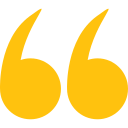
We travelled with Falcon Safaris in Zimbabwe and Botswana for 16 days. Falcon designed a wonderful trip with private guide to the most interesting sites in both countries. The organization of the whole trip was excellent, flights within the country, accommodation and activites. The guides were very knowledgable and told us a lot about the countries, their history, people, economy and much more. We visited the Great Zimbabwe Ruins, the Victoria Falls Tour and a number of national parks in both countries.
Rhino tracking was a real adventure! We had tremendous further game drives and saw very many animals - we did the Big Five. We had much more Victoria Falls Activities than planned and enjoyed very much.We strongly recommend Falcon Safaris to everyone planning a trip to Southern Africa and East Africa.

Our Consultant Vimbai was very helpful and accommodating. We stayed at the Elephant hills hotel which was nothing short of amazing.Our activities included a helicopter flight, dinner cruise as well as a morning game drive. All the activities were absolutely amazing.

We worked with Gertrude to schedule and organize everything and she did an excellent job. I asked a lot of questions via e-mail and she answered everyone in a timely helpful manner. Our guide at Victoria Falls was also great. He met us at the airport, provided a thoughtful tour of the Falls and got us to our next guide in Botswana. Our lodgings at River View Lodge were just as described- very comfortable and excellent food. All the staff were so pleasant and helpful. If I had to do it again I would arrange a morning boat ride as well. We only did the sunset boat rides and they were the high point of our entire trip- we saw so many animals and our guide was very knowledgeable. Just a great experience. Our lodgings at Oddball's Enclave was rustic and we loved it. So great to disconnect from the world for a bit. Leo, our guide, was the best - got us out and about, saw fantastic wildlife and got back to camp safely each time. Doc manages the camp so well. This whole trip was planned and organized by Falcon Safaris and we could not have been happier.

Falcon safaris have given my the correct advice with excellent service. The only suggestion will be to work closer with the lodges to confirm bookings as soon as possible. We have booked and pay our deposit a year in advance. We have only receive our final convermation from Chobe Safari lodge a week before departure. I do realize its not within your controle but with limit alternatives and a group of 14 people it becomes an issue to find alternative accomodation if the booking was cancelled.
We love Africa's diversity and create amazing trips for you. With 30+ years of experience, we customize every trip just for you.